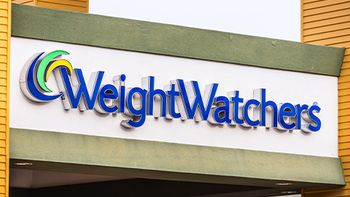- Pharmaceutical Commerce - October 2025
- Volume 20
- Issue 5
Alternative Funding Programs Threaten Patient Access
Marketed as cost-saving tools, AFPs can also strain safety-net resources.
According to a new national poll from the PAN Foundation’s Center for Patient Research,1 in the past 12 months, more than half (54%) of insured adults with commercial insurance have been told by their health insurance plan that medications for their chronic or rare disease were no longer covered. In addition, nearly half of commercially insured adults (48%) report that their payer plan referred them to work with an external company to obtain their medications, causing delays and negative impacts on their health and life.
These external companies may be third-party, for-profit vendors that have marketed alternative funding programs (AFPs) to self-funded employer health plans as a cost-avoidance measure for specialty drugs.
AFPs typically work in one of two ways:
1. The plan excludes coverage for selected specialty medications, leaving patients without coverage for these drugs under the plan benefits.
- The patient is “offered” the “opportunity” to work with the contracted vendor to obtain their drug via another source, usually a manufacturer patient assistance program (PAP).
- If the PAP application is not approved, and the employer does not override the exclusion as a medical necessity, the patient must pay for the drug themselves, and these costs do not count toward their annual deductible or out-of-pocket (OOP) cost-sharing requirements.
- If a PAP is not available, some vendors may try and obtain the medication through a foreign pharmacy.
- If the patient does not work or comply with the vendor’s requirements, they must pay for the drug themselves without any of the expenses being counted toward deductible or OOP cost-sharing requirements, or obtain other insurance.
2. The plan covers the specialty drug but implements an automatic denial of prior authorization that requires the patient to first work with the vendor to try and seek the drug through another source, usually a manufacturer PAP, as a precondition for coverage.
- If a PAP is not available or the patient does not qualify for the PAP, the vendor may try to seek the medication through a foreign pharmacy and/or apply for patient assistance through another source to offset the plan’s financial cost of coverage.
- If the vendor’s efforts to get the medication through a PAP or foreign pharmacy are unsuccessful, the specialty drug will be processed through the plan’s established benefits procedure (the plan may cover the drug in this case).
- If the patient does not work or comply with the vendor’s requirements, they are typically deemed to be in violation of its terms for prior authorization and are responsible for paying for the drug themselves without any of the expenses counting toward their deductible or out-of-pocket cost sharing requirements.
AFPs target the sourcing of the drug itself. The goal is to eliminate or reduce specialty drug spending for employers, mostly by taking advantage of manufacturer PAPs.
What are the negative impacts?
There are several negative impacts to patients because of AFPs, including:
- Delaying/denying access to needed medications, potentially worsening the patient’s condition or disease.
- Devaluing the patient’s health plan and their required premium contributions by the plan’s failure or refusal to provide timely coverage of prescribed medications.
- Possibly interfering with provider treatment decisions, including non-medical switching of medications
- Depleting safety-net programs intended for uninsured or underinsured patients, including manufacturer PAPs.
- Increasing patients’ costs and eliminating patients’ cost-sharing protections.
What can you do?
While there is currently no federal legislation banning the use of AFPs, there are things you can do today to help bring about change, including educating employers2 about the negative impact AFPs have on their employees and empowering healthcare providers3 to help patients understand how to recognize when AFPs may be at play.
About the Author
Amy Niles is chief mission officer at PAN Foundation.
References
1. PAN Rapid Poll Alternate Funding Programs. PAN Foundation. July 2025.
2. Action Brief: Employer Strategies that Drive Health, Equity, and Value. National Alliance of Healthcare Purchaser Coalitions.
3. Understanding Alternative Funding Programs, Copay Accumulators, and Copay Maximizers: A Resource for Healthcare Professionals. PAN Foundation.
Articles in this issue
about 1 month ago
Pharmaceutical Commerce: October 2025 Interactive Digital Editionabout 1 month ago
Staying Current on Cold Chainabout 1 month ago
Surveying the Industryabout 1 month ago
Why Your EHR Messaging Must Be Real-Timeabout 1 month ago
Bridging People, Process, and Technologyabout 1 month ago
DSCSA Compliance: Milestones, More Deadlines—and the Road Aheadabout 1 month ago
Building Resilient, Sustainable Pharma Supply ChainsNewsletter
Stay ahead in the life sciences industry with Pharmaceutical Commerce, the latest news, trends, and strategies in drug distribution, commercialization, and market access.




